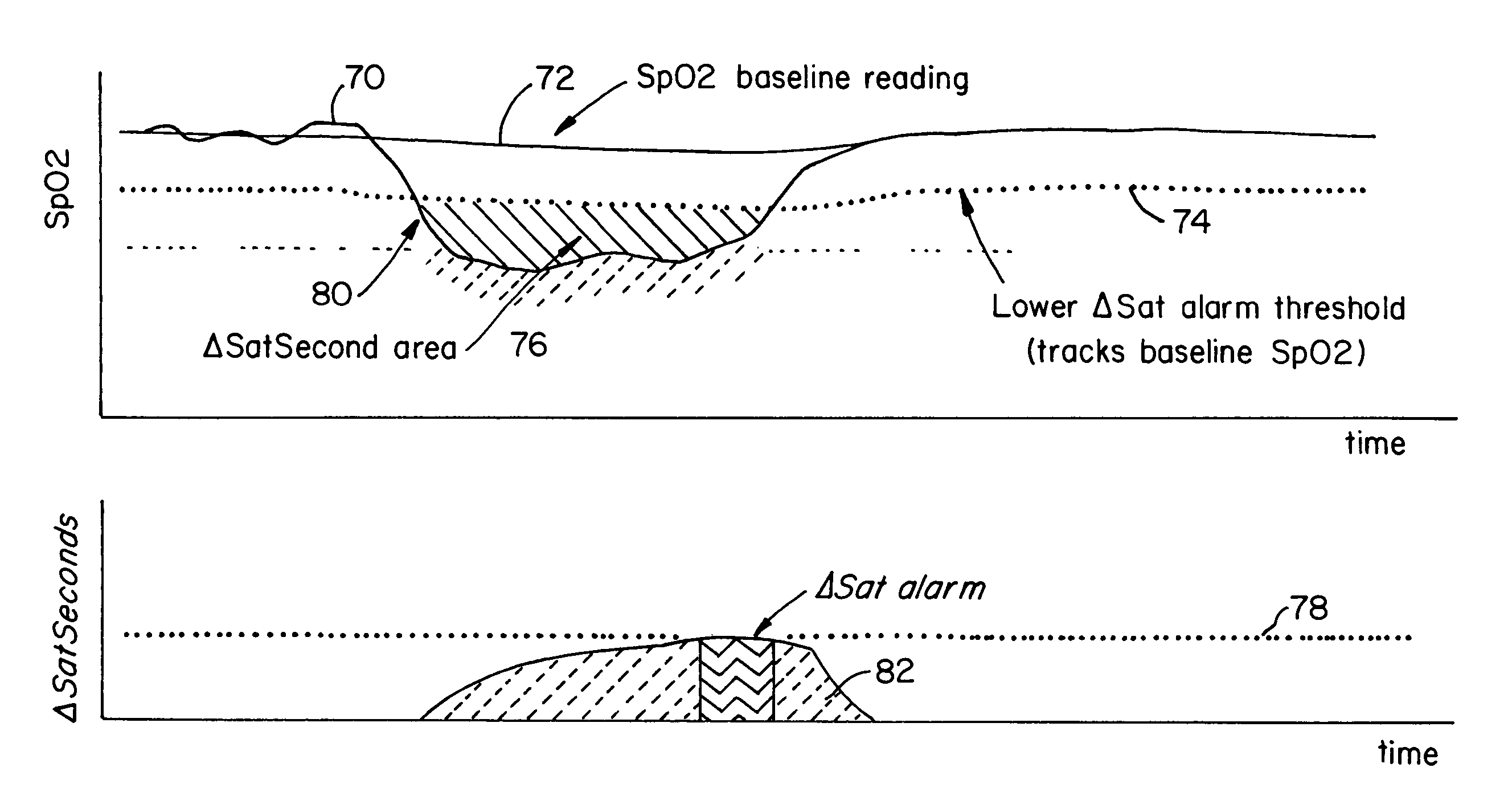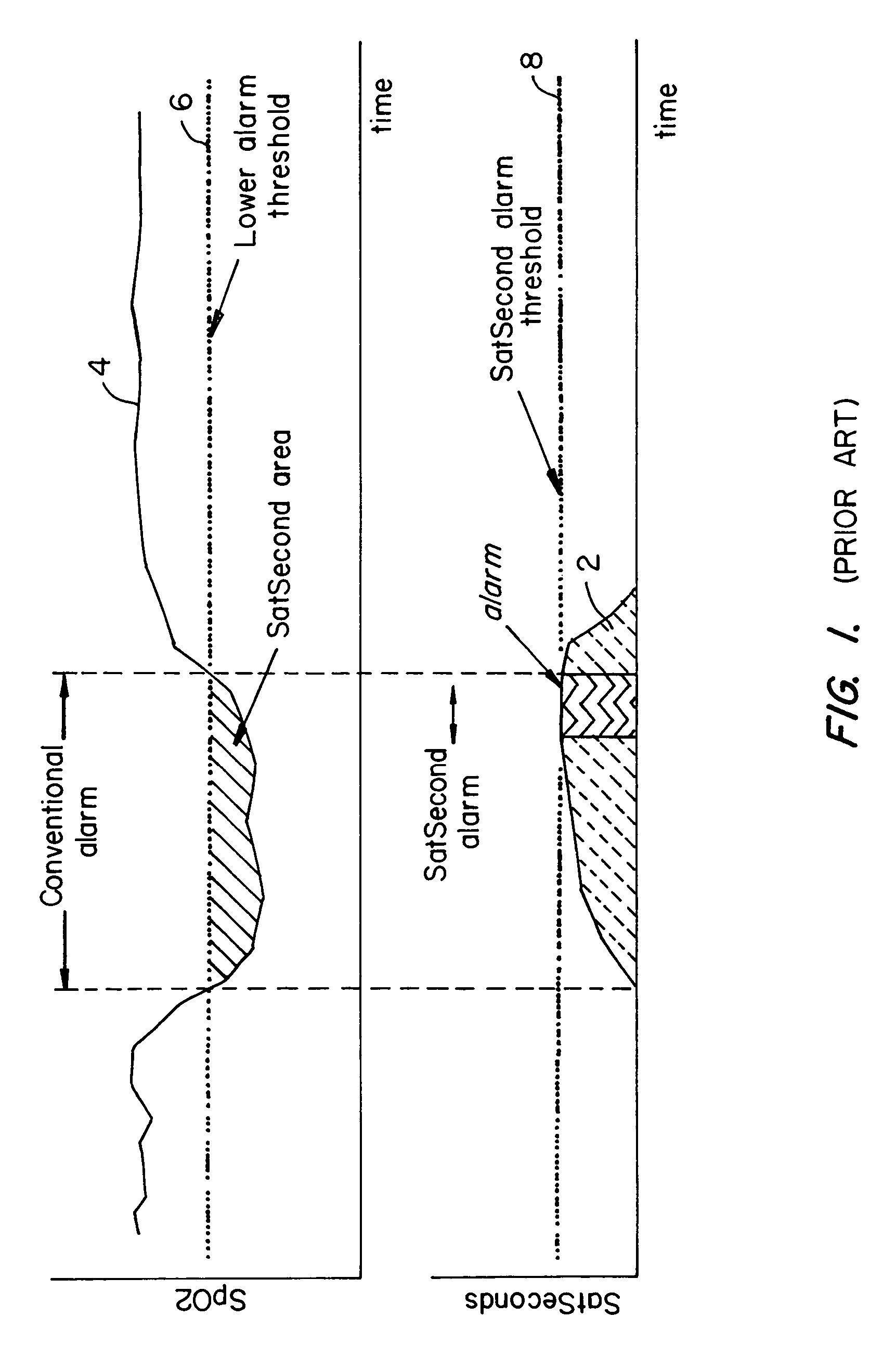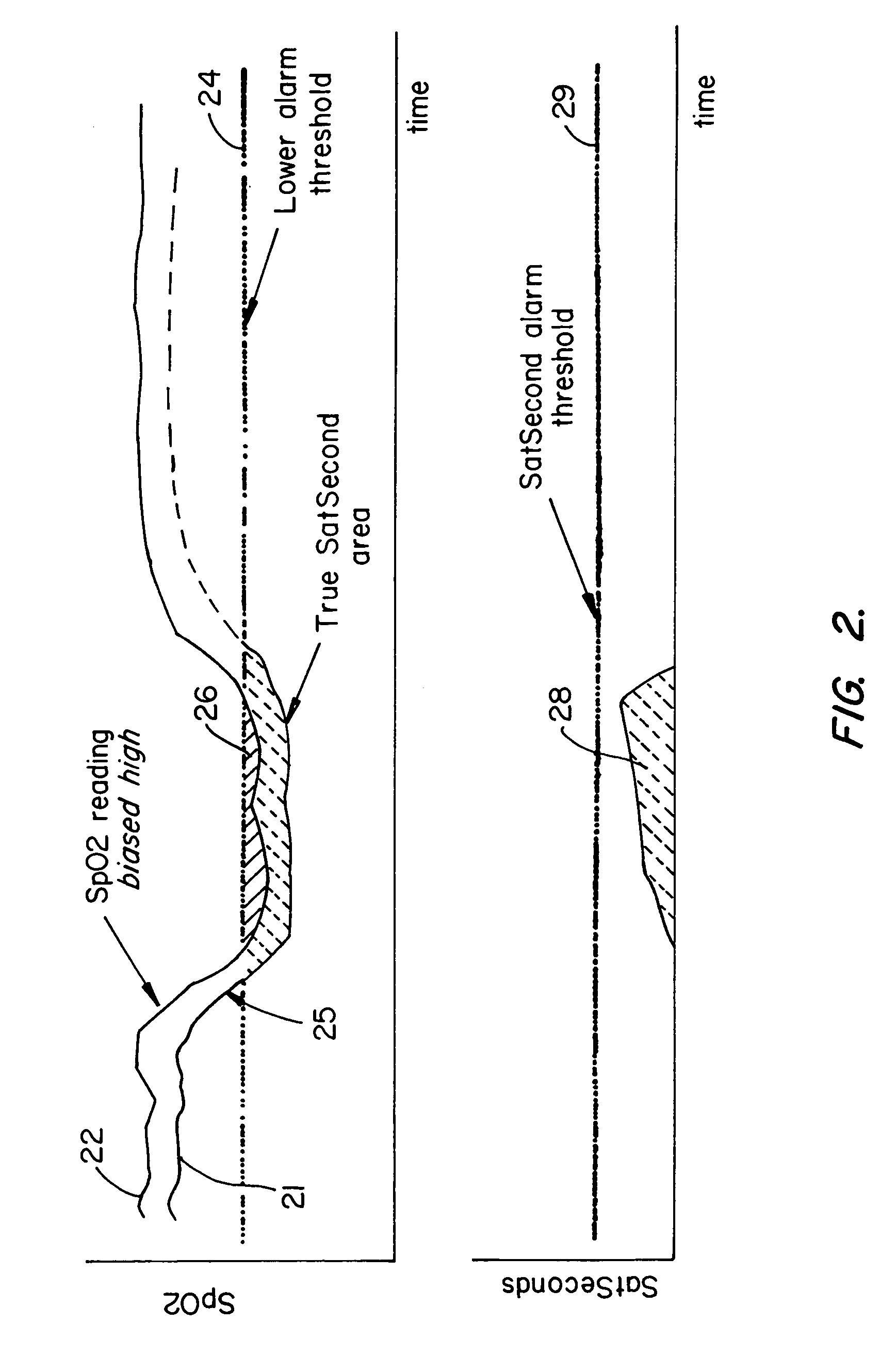Nuisance alarm reductions in a physiological monitor
a physiological monitor and alarm technology, applied in the field of improvement in reducing nuisance alarms of pulse oximeters, can solve problems such as false events and trigger alarms, lowering thresholds, and reducing thresholds
- Summary
- Abstract
- Description
- Claims
- Application Information
AI Technical Summary
Problems solved by technology
Method used
Image
Examples
example 1
Correct SpO2 Readings
[0041]This example involves a scenario where the SpO2 readings are correct, or in other words, the SpO2 and SaO2 readings are equivalent, since no measurement bias is present. In this example, if the SaO2 value drops 2 points below the fixed threshold (83% SaO2 and SpO2), the SS alarm will sounds in 13 seconds (13 sec*2 sat deviation=26 sat-seconds, which is greater than 25 sat seconds). The ΔSS level triggers at an equivalent point, but is redundant. Both trigger events represent True Positives (TP). A Positive event is an event where the diagnostic device triggers an alarm. A “True” condition refers to the real and actual data supporting the presence of an alarm condition. Thus a TP event is where the diagnostic device senses an event and triggers an alarm where a real clinically significant event was present. A TP event represents an event where the diagnostic device has correctly identified a clinically significant event and triggered an alarm.
[0042]If the S...
example 2
Positively Biased SpO2 Readings
[0043]This example involves a scenario where the SpO2 baseline reads 98%, 3 points high relative to the true SaO2 value due to a reading with positive bias. In this example, if the SaO2 value drops 12 points, that is 2 points below the threshold (83%), an alarm state should occur in 13 seconds (13 sec*2 sat deviation=26 sat-seconds, which is greater than 25 sat seconds), but does not due to the bias resulting in a SpO2 reading of 86%. This results in a False Negative (FN) for the SatSecond (SS) threshold. A “False” event refers to a state sensed by the diagnostic device that is not supported by the real and actual data. Thus a FN event is where a diagnostic device should trigger an alarm but does not. A FN event represents an event where the diagnostic device has missed a clinically significant event and not triggered an alarm. In this example, the SS alarm would never occur since the SpO2 value never drops below 85%. Further, a conventional SpO2 set t...
example 3
Negatively Biased SpO2 Readings
[0046]This example involves a scenario where the SpO2 baseline reads 92%, 3 points low relative to the true SaO2 value due to a negatively biased reading. In this example, if the SaO2 drops 12 points, 2 points below the fixed threshold (83%), with the SpO2 reading 80% due to the negative bias, the SS alarm is triggered after 5 seconds (5 points below threshold* seconds=25 SS). The ΔSS alarm will trigger in 13 seconds (2 points below the 10 point allowable threshold takes 13 seconds to exceed 25 Δsat-seconds). Thus this scenario results in a TP for both alarm methods, though a little sooner than required for the fixed SS alarm.
[0047]If the SaO2 drops 8 points, 2 points above the fixed threshold (87%), the SS alarm should never engage, but it does trigger a FP in 25 seconds due to the 3-point low bias (SpO2=84%). The SpO2 drop from 92% to 84% does not trigger an ΔSS alarm since it does not exceed the 10% necessary threshold drop. Here the advantage of th...
PUM
 Login to View More
Login to View More Abstract
Description
Claims
Application Information
 Login to View More
Login to View More - R&D
- Intellectual Property
- Life Sciences
- Materials
- Tech Scout
- Unparalleled Data Quality
- Higher Quality Content
- 60% Fewer Hallucinations
Browse by: Latest US Patents, China's latest patents, Technical Efficacy Thesaurus, Application Domain, Technology Topic, Popular Technical Reports.
© 2025 PatSnap. All rights reserved.Legal|Privacy policy|Modern Slavery Act Transparency Statement|Sitemap|About US| Contact US: help@patsnap.com



